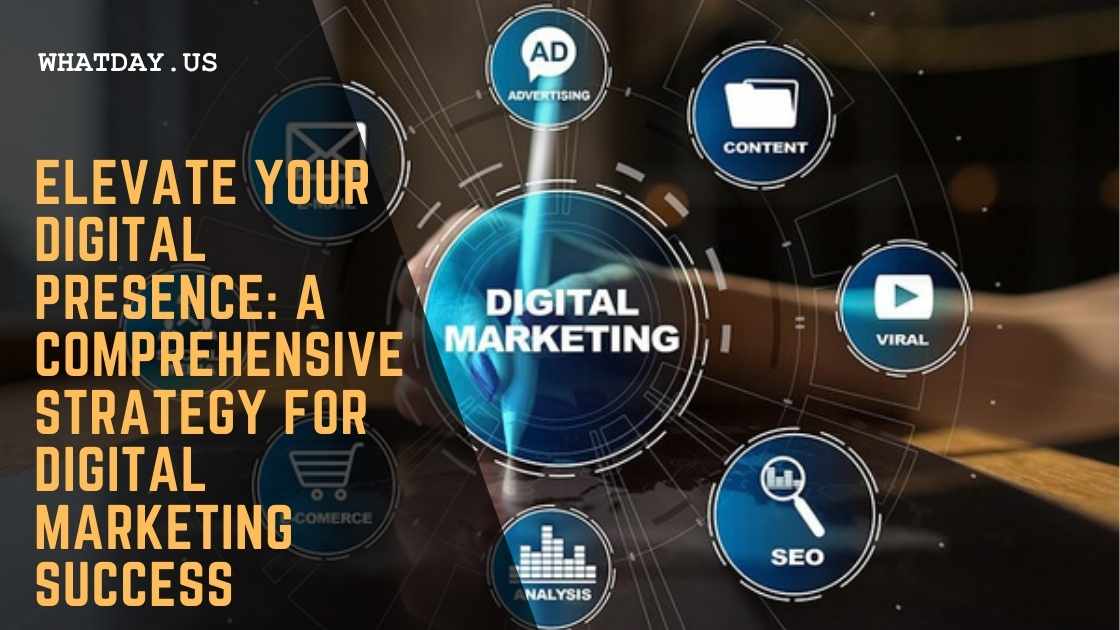Introduction:
In today’s ever-evolving digital landscape, businesses of all sizes face a common challenge: standing out in an overcrowded online marketplace. A strong digital presence is no longer a luxury; it’s a necessity. This comprehensive guide will equip you with actionable strategies and techniques to elevate your digital presence and achieve remarkable success in the competitive world of digital marketing.
1. Craft a Compelling Website:
Your website is the cornerstone of your digital presence. It serves as a virtual storefront, providing potential customers with valuable information about your brand, products, and services. To stand out, your website must be well-designed, user-friendly, and optimized for search engines.
- Hire a Professional Designer: Consider hiring a web designer or developer to create a custom website that aligns with your brand identity and business objectives.
- Prioritize User Experience: Ensure your website loads quickly, provides intuitive navigation, and offers a seamless user experience across all devices.
- Implement SEO Best Practices: Optimize your website’s content, structure, and technical aspects to improve its search engine rankings.
2. Master the Art of Content Marketing:
Content marketing is the art of creating and distributing valuable, relevant, and consistent content to attract and retain a clearly defined audience. By providing informative and engaging content, you establish your brand as a thought leader and build trust with potential customers.
- Identify Your Target Audience: Clearly define your target audience and tailor your content to their specific needs, interests, and pain points.
- Create Exceptional Content: Invest in creating high-quality content that resonates with your audience. This can include blog posts, articles, videos, infographics, and more.
- Distribute Content Strategically: Utilize various channels to distribute your content, including social media, email marketing, and paid advertising.
3. Harness the Power of Social Media:
Social media platforms offer an incredible opportunity to connect with your target audience, build relationships, and promote your brand. Use these platforms to engage with customers, share valuable content, and drive traffic to your website.
- Select the Right Platforms: Choose the social media platforms where your target audience is most active.
- Create Engaging Content: Share content that resonates with your audience, including images, videos, stories, and interactive posts.
- Interact with Your Audience: Respond to comments, messages, and mentions to build relationships and foster brand loyalty.
4. Utilize Search Engine Optimization (SEO) Techniques:
SEO involves optimizing your website and content to improve its visibility and ranking in search engine results pages (SERPs). By implementing effective SEO strategies, you can attract more organic traffic to your website and reach a wider audience.
- Conduct Keyword Research: Identify relevant keywords and phrases that your target audience is searching for.
- Optimize Your Content: Incorporate keywords naturally into your website’s content, including blog posts, product pages, and meta descriptions.
- Build High-Quality Backlinks: Acquire backlinks from reputable websites to increase your website’s authority and improve its ranking.
5. Invest in Paid Advertising:
Paid advertising platforms, such as Google Ads and social media ads, allow you to target specific demographics, interests, and keywords to reach your desired audience. Use paid advertising to complement your organic marketing efforts and drive immediate results.
- Choose the Right Platform: Select the advertising platform that best aligns with your target audience and marketing objectives.
- Create Compelling Ads: Design visually appealing and persuasive ads that capture attention and encourage users to take action.
- Monitor and Adjust Your Campaigns: Track the performance of your paid advertising campaigns and make adjustments as needed to optimize your results.
6. Embrace Email Marketing:
Email marketing remains a powerful tool for nurturing leads, building customer relationships, and promoting your products or services. Create targeted email campaigns that provide value to your subscribers and encourage them to engage with your brand.
- Build an Email List: Collect email addresses from website visitors, social media followers, and other marketing channels.
- Segment Your Audience: Divide your email list into segments based on demographics, interests, or behavior to send personalized messages.
- Create Engaging Newsletters: Design visually appealing and informative email newsletters that keep your subscribers engaged.
7. Track Your Progress and Adapt:
Digital marketing is a data-driven field. Utilize analytics tools to track key metrics, such as website traffic, conversion rates, and social media engagement. Regularly analyze your data to identify what’s working and what needs improvement.
- Implement Analytics Tools: Use Google Analytics and other analytics tools to collect and analyze data about your website’s performance.
- Monitor Key Metrics: Define key performance indicators (KPIs) that align with your marketing goals and track them regularly.
- Make Data-Driven Decisions: Use data to make informed decisions about your digital marketing strategy and optimize it for better results.
Conclusion:
By implementing the strategies outlined in this guide, you can elevate your digital presence and achieve remarkable success in the competitive world of digital marketing. Remember, digital marketing is a continuous process that requires ongoing effort, adaptation, and innovation. Stay updated with industry trends, and experiment with new ones.




